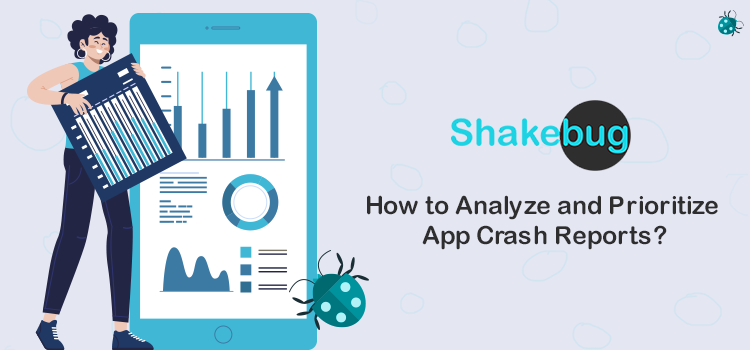Understanding, Analyzing, and Prioritizing App Crash Reports is a comprehensive guide to comprehending, analyzing, and prioritizing app crash reports. This guide will give you an overview of the various app crashes and how to analyze them for root cause analysis. It will also go over methods for determining which issues should be addressed first based on their impact on user experience. Finally, it will discuss best practices for tracking progress over time so that you can ensure that your fixes are having the desired effect.
Understanding App Crash Reports
Analyzing and prioritizing app crash reports is a critical step in determining why your application is crashing or acting strangely. To properly diagnose the problem, it is critical to understand the various types of crashes, how they are reported, and what information can be gleaned from them.
You’ll gain a better understanding of which issues require immediate attention and which should take precedence over others by analysing these reports. This comprehensive guide will assist you in analyzing and prioritizing app crash reports to quickly identify issues and ensure that your applications remain stable for users.
Related Read:- 25 Common Reasons for Mobile App Crashing
Tools and Platforms for Crash Reporting
When it comes to analyzing and prioritizing app crash reports, a variety of bug reporting tool and platforms are available to assist you. Shakebug, Firebase Crashlytics, Instabug, App Center Crashes, Bugsnag, Sentry, and other services are among them.
Depending on your needs, each platform provides different features, but all provide the ability to track crashes in real time so you can quickly identify issues before they become too severe or widespread. Furthermore, many provide advanced analytics capabilities, allowing developers to gain insights into user behaviour patterns related to the performance of their apps.
Initial Steps in Analyzing Crash Reports
The first step in analyzing crash reports is a detailed guide for analyzing and prioritizing app crash reports. This section discusses the first steps to take when analyzing a crash report from an app, such as understanding what type of data is included in the report, identifying patterns or trends that may indicate potential problems with your codebase and strategies for determining which issues should be addressed first based on their severity and impact on user experience.
This section also explains how to use analytics tools to gain more insight into crashes so you can better understand why they happen and develop solutions accordingly.
In-Depth Analysis of Crash Reports
An in-depth analysis of the data is required when analyzing and prioritizing app crash reports. Developers can identify patterns that may be causing problems with their application by digging deeper into each report. This assists them in determining which areas require additional attention so that they can focus on resolving those issues first.
Furthermore, this process allows for a better understanding of how users interact with the app and what features or functions may need to be improved or developed further. Developers have greater insight into user experience and potential solutions for any issues that arise when they use a comprehensive approach to analyzing and prioritizing crash reports.
Categorizing and Prioritizing Crashes
It is critical to categorize and prioritize crashes when analyzing app crash reports. This involves categorizing the crashes based on their severity, frequency, or other factors that can help prioritize them for further investigation.
It also aids in the identification of any patterns or trends among the various crash reports, allowing them to be addressed quickly and efficiently. Developers will have a better understanding of what needs to be fixed first to improve user experience with their apps by properly categorizing and prioritizing these crashes.
Collaboration and Communication
It is critical to have a clear understanding among all stakeholders involved for everyone to be on the same page when determining which issues are most pressing and what steps must be taken to address them.
Having open communication channels will also help to ensure that any new information or changes are quickly shared with those who require them, allowing teams to stay up to date on their progress toward resolving crashes.
Continuous Improvement
Continuous Improvement is an important part of analyzing and prioritizing app crash reports. It involves taking the information gathered from the analysis process and using it to make improvements to prevent future crashes.
This can include implementing new features, updating existing code, or improving user experience. By continuously monitoring performance metrics, developers can identify potential problems before they become major issues and take steps to address them quickly.
Case Studies and Examples
To help illustrate the concepts discussed in this guide, we have included several case studies and examples of how to analyze and prioritize app crash reports. These cases will provide real-world scenarios that demonstrate the importance of understanding user feedback when it comes to identifying issues with an application.
They also show how different types of data can be used together to create a comprehensive picture for developers on where they should focus their efforts first when addressing crashes or other problems within their apps.
Some real-world examples of successful crash report analysis and resolution include identifying memory leaks in a mobile game, fixing bugs caused by third-party libraries, or resolving compatibility issues between different versions of iOS.
Crash reporting tools such as Shakebug, and Firebase Crashlytics are invaluable for helping to prioritize bug fixes based on severity level and frequency and the types of bugs so that developers can focus their efforts where they will have the most impact.
Conclusion
To summarize, analyzing and prioritizing app crash reports is a complex process that must be approached with caution. Understanding the user’s experience, gathering data from multiple sources, categorizing crashes into meaningful groups, and determining which ones should be addressed first is all part of the process.
By following this guide to effectively analyze and prioritize app crash reports, you can ensure that your users have the best possible experience with your product or service.


